Category Archive: Uncategorized
Temperature is extremely important when choosing a bearing. Whether due to friction, electrical current, electromagnetic induction, or an extreme external environment, bearings are often required to perform in high temperature environments. We’ve provided this quick article to help you understand the essence of what it takes for your bearing to take the heat.
Bearings are very precise instruments, and for them to work properly, all their parts (races, rolling elements, cages) have to stay within tight engineering tolerances. For example, if the outer race were to expand too severely, the bearing could be in danger of wearing excessively, leaking lubricant, or otherwise stop performing properly.
As a second example, if one or more of the rolling elements were to deform, the bearing would no longer run smoothly, and may even jam up and fail catastrophically. Effects like these can be experienced in high temperature environments, when the expansion is significant.
Bearings have a finite design lifetime, as over time the steel will expand, deform or wear, impacting the bearing’s tolerances and clearances. Aging effects are normally slow and gradual; however, extreme temperatures can dramatically accelerate the bearing aging process.
At Action Bearing we address this issue by guaranteeing all of our bearings to be dimensionally stable within certain operating temperatures. This means that as long as a bearing is not used above the maximum operating temperature, its critical dimensions will remain within specified tolerances for the bearing lifetime.
In a nutshell, your bearing will continue to perform as your design requires. However at temperatures outside the guaranteed operating range, bearing life and performance should be expected to decrease according to the loading conditions and the operating environment.
The table below lists our dimensionally stabilized categories divided by maximum operating temperature:

No matter what your application, we are here to help. Action Bearing has years of experience providing high quality bearings to many different industries, and our technical team is here to help you choose the right bearing for your application. If you need to know if your bearing can take the heat, contact us today or visit our Catalog and Technical Toolbox webpages. These resources include information intended to help accelerate your decision-making process.
The purpose of a rolling bearing is simple, reduce the rolling friction while supporting the applied load. Most rolling bearings are composed by two concentric rings – known as the inner and outer race – separated by a set of evenly spaced elements rolling in between them.
Selecting a bearing requires choosing a series of parameters, including not only the most appropriate type and correct size, but also the right material. In fact, making sure that the material has the appropriate strength and toughness for the design is extremely important for a bearing.
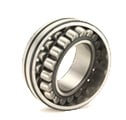
Another important parameter to consider is the environment that the bearing will be exposed to. Will your bearing come in contact with water? Acids? Reactive gases?
If so, there are a number of corrosion-resistant steels available. However, corrosion-resistant steels should be chosen carefully as higher corrosion resistance comes at the price of lower surface hardness and lower load capacity.
The most common material used for rings and rolling elements is chromium alloy steel that has been hardened – a heat treatment that increases steel’s hardness and tensile strength – which makes the bearing suitable for the majority of applications.
However, when the bearing has to withstand high loading conditions, heavy shock loads or survive in a dirty, rugged environment, case-hardened steel is a better choice.
Case-hardened steel bearings have a hard outer shell with a ductile inner core that makes them less susceptible to fracture, better for shock loads, and resistant against dust and grime.
There is definitely a lot to consider when selecting the appropriate bearing for your application, but at Action Bearing we’ll help you find the bearing you need. No matter what the application, our years of technical experience and our bearing know-how will guarantee that we’ll find the bearing that is right for you.
Clearance, preloading, and fit are common mechanical engineering concepts that also apply to the rolling bearing, for which they have a crucial importance. At Action Bearing we want to make sure that your bearing selection is perfect for your design. In this post, we will discuss clearance fits and preloads.
First, it is important to delineate between initial and operating clearance. The former refers to the bearing before it’s mounted and the latter when the bearing is mounted and has reached a steady temperature. As a general rule, a ball bearing should have an almost-zero operational clearance, while needle, spherical, cylindrical and CARB toroidal bearings should always have some residual radial operational clearance.
Radial clearance is the play between the ball and raceway perpendicular to the bearing axis. Axial clearance is the play parallel to the bearing axis and is typically at least 10 times greater than the radial clearance. Too little or too much internal clearance will significantly influence factors such as heat, vibration, noise, and fatigue life. Radial bearing clearance is broken down into several groups: C1, C2, CN, C3, C4, and C5. CN is the “normal clearance” and is defined by DIN 620 and ISO 5753 and is used for bearings in normal operating conditions; C1 and C2 class bearing have radial clearances smaller than CN.
It is important to note that, in applications that have to withstand particularly high or low temperatures, the clearance has to be taken into account early in the design process, in order to make sure that the clearance is compensated for, due to the thermal expansion and contraction of the housing and shaft.
How a bearing fits into your assembly is also a major factor in its performance. In general, the bearing’s inner ring should have a tight fit on the shaft and the outer ring should have a tight fit in the housing. For more details about mechanical fits, you can refer to mechanical tolerance standard charts, or contact us at Action Bearing. We would be delighted to guide you through this process and make sure that your bearing and shaft have the appropriate size for your design.
As a general rule, once the bearing is fit into place there should still be some residual clearance inside the bearing. However, in some cases that clearance may not be ideal and the bearing should be preloaded – a load should be applied to the bearing, pushing the ring and effectively removing any clearance.
Preloading is a good idea for bearings under a very light load at high speeds, for preventing bearing slip or creep in machine tools, or for pinion bearings in automotive axle drives where some extra rigidity in the bearing is needed.
There are two main methods for preloading: position preload and constant pressure preload. The type of preload that’s best for you depends on your application. Generally speaking, position preloading increases the rigidity of the bearing and constant pressure preloading reduces axial vibrations in high speed applications.
Be careful to not over-do it on preloading. If too much preload is applied you can increase the energy dissipated by the bearing, increase power consumption and decrease bearing life. Again, if you have questions, give us a call and we’ll discuss your application. At Action Bearing we will help you find the right fit. Contact us today or visit our Catalog and Technical Toolbox web pages to find the right bearing for you.
Each October, professionals from various industries celebrate Manufacturing (MFG) Day. This national event gives companies the opportunity to open their doors to the general public.
The goal: to discuss current trends and innovations in the industry, as well as to address challenges faced by manufacturers.
MFG Day exists to promote transparency within the industry—a goal that Emerson Bearing is very passionate about. Our team has nearly 60 years’ experience providing solutions to diverse OEM and maintenance clients, both global and domestic.
Much of our success is attributed to our unrivaled dedication to quality service. As such, we are excited to invite those in the New England Area to join us for a special MFG Day Open House.
This free event will take place Oct. 2 from 11 am to 4 pm. The Emerson Team will be hosting a variety of educational presentations and providing detailed tours of our advanced facilities. Additionally, we’ll provide examples of the applications for our bearings—everything from robotics to steel mills, and anything in between.
This is your chance to learn more about our company and how we can support your applications. Our open house event is also a great opportunity for those interested in a manufacturing career; we encourage any future engineers, designers, or OEMs to attend and gain valuable insight regarding our industry.
Registration for this event is open now, so be sure to reserve your spot today. For more information regarding our Manufacturing Day event, don’t hesitate to contact Steve Katz, President of Action Bearing, at skatz@emersonbearing.com, or via phone at 617-782-1400.
We look forward to seeing you at this year’s event!
At Action Bearing we are fully dedicated to our customers, and take pride in making outstanding products as well as providing accurate documentation of their performance. Our bearings are engineered and manufactured with the highest levels of precision, and uphold the highest quality standards, however, no bearing lasts forever. So how can you be sure that your bearing will perform well throughout its life?
Rolling element bearings are known for being extremely reliable, and many even outlive the machines on which they are installed. However, several factors can shorten a rolling element bearing’s life, and load and speed are the most common causes for early failure. A load that exceeds the bearing specification can accelerate fatigue, shorten its life up to a factor of 8-10, and a speed exceeding the veering specifications can also dramatically decrease a bearing life. Other factors like extreme temperatures, vibrations, and dirt or contaminants play an important part in a bearing’s life.
Nevertheless, if a bearing was selected correctly and used for the correct application, it will surely last for the specified lifetime (and probably longer). Listed below are approximate values for bearing life (measured in operating hours) that you can expect for different applications: 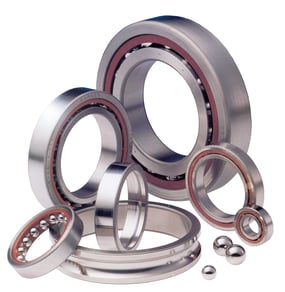
- Hobbyist’s power tools: 100-150 hr
- Professional power tools: 100-1000 hr
- Household appliances: 200-3000 hr
- Agricultural machinery: 500-5000 hr
- Tractors: 5000-12000 hr
- Cars and trucks: 800-10000 hr
- Trucks generally have a longer bearing life by design than cars
- Hydraulic systems: 1000-20000 hr
- Bearings in stationary hydraulic systems generally outlast bearings in mobile hydraulic systems
- Office and data processing machinery: 1200-16000 hr
- Material handling equipment: 2000-18000 hr
- Rolling mills: 2000-20000 hr
- Compressors: 3000-20000 hr
- Building material machinery: 5000-50000 hr
- Crushers: 13000-40000 hr
- Extruders: 20000-50000 hr
- Industrial gearboxes: 20000-50000 hr
- Textile machinery: 20000-70000 hr
- Printing presses: 35000-100000 hr
- Paper machinery: 75000-150000 hr
Action Bearing is here to help you get the most out of your bearings. For years our experienced team has been providing high quality bearings across a large span of different industries. Consult with us, and we’ll make sure your bearing lives a long, full, productive life. For more information on which kind of bearing is best for you, visit our Catalog and Technical Toolbox web pages.
A rolling bearing is composed of: two rings – known as the inner and outer race – separated by a set of rolling elements, which are most often kept at a relative distance by a cage. At its most basic level a rolling bearing decreases rotational friction and supports radial and axial loads. Each element is manufactured to a certain tolerance, and the sum of the geometrical and form tolerances determines, loosely speaking, the level of performance of the bearing – rating the load it can carry axially and/or radially, the limiting speed, noise, etc.
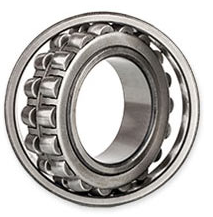
For a long time, only bearings with wide tolerances could be mass produced, nowadays, however, technology has advanced dramatically and parts can be manufactured with very tight tolerances, to produce extremely high performing bearings routinely.
So how do I know if a bearing has a wide tolerance or a tight tolerance?
The Annular Bearing Engineering Committee (ABEC) created a rating system that has become the industry standard for ball and roller bearing tolerances. ABEC includes five tolerances classes: 1, 3, 5, 7, and 9 with 1 being the widest and 9 the tightest. Thus, bearings with a higher ABEC rating have tighter tolerances, and that means better precision, higher efficiency, and the potential to accommodate applications requiring high speeds.
It is important to note that a bearing in a higher ABEC class does not imply that the bearing can carry a higher load, rather it can carry the same load as an analogous bearing with a lower rating but at higher speed, thanks to its more controlled runout and smaller endplay. ISO has an equivalent standard (ISO 492) for bearing tolerances that corresponds to the ABEC ratings as follows: normal class 6x (tightest), 6, 5, 4, and 2.
The ABEC tolerance classifications specify both tolerances of size and form for the individual inner and outer rings. The critical features of the rings include the bore (or inner diameter of the inner ring), the outer diameter of the outer ring, the ring widths, and the raceways of each ring. Tolerances of form include roundness, taper, runout, and parallelism.
And how do I know if I need an ABEC 7 bearing or an ABEC 3 for my application?
In general a bearing is a very precise mechanism, and the design specifications are the main driver for choosing one. In fact, selecting a bearing with a tolerance too loose for the application can impact the maximum amount of torque that it can withstand or cause an imbalance of the load at high speed, and ultimately impact its life span. Conversely, a bearing with a tolerance that is too high for the application will probably perform better, but will also cost significantly more.
The vast majority (more than 98%) of ball bearings sold every year belong to the ABEC 1-3 classes – with tolerances that are down to the 4th decimal place! – and can satisfy the vast majority of applications. Bearings in higher classes, called high/super/super high/ultra-precision (falling into ABEC 5,7,9 classes), have much tighter tolerances, that require more precise machining and longer production times. These bearings are available in more limited supply and have prices 4-5 times higher than ABEC 1-3 bearings.
Specifically, thanks to its smaller runout and axial play, an ABEC 7 bearing will perform better and last longer in high speed applications, than an ABEC 3 rated bearing. So, if you need a super precise, long-lasting bearing, ABEC 7 is probably the bearing for you. Applications for highly rated ABEC bearings include Machine Tools, Aerospace, Medical devices and more.
Conversely, if your application doesn’t require extremely high tolerances, an ABEC 1-3 bearing is probably the better choice. For example, ABEC 1-3 rated bearings are used in automotive, electric motors, gear boxes, and most industrial applications.
In ultimate analysis, when choosing a bearing based on its ABEC rating, always keep in mind the scope, carefully consider your design specifications (how fast is this going to go?!), while keeping in mind the desired lifespan. Weigh these considerations against the cost/performance trade-offs of the standard and select the bearing that is best suited for your application.
At Action Bearing, we know that choosing the right bearing is essential to your success. We have years of experience providing high quality bearings to many different Industries, and our technical team is here to help you choose the right bearings for your application. In addition, our Catalog and Technical Toolbox webpages include information that can help accelerate your decision-making process.
If you have any questions, feel free to contact us today; we’re happy to help you select the most appropriate bearing for your needs.
Action Bearing launched a Golf division to specifically cater to the bearing needs of golf courses and facilities utilizing golf carts throughout the U.S.
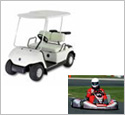
Our Golf division was created to meet increased demand and significant growth in this particular market over the past two years.
Richard Furtado leads our Golf division. A resident of Boston and our Senior Sales Expert, Richard has been with the company for more than three decades. He graduated from Clark Atlanta University in Atlanta with a degree in Business Management and over the years has received additional training and accreditation.
Richard will assist our customers in determining which bearing technologies would be most suitable by taking into consideration the specifications, recommendations, maintenance strategies, fatigue life and wear resistance of the bearing in relation to the application.
Bearings for the golf cart market must be able to withstand outdoor environments and for this, we provide mounted units with triple lip seals and ball bearings with full contact sealing. Action Bearing also provides spherical bushings, spherical roller bearings, tapered roller bearings, adhesives and sealants, rod ends, oil seals and mounted units.
Our company carries a full range of brands for this market including SKF, FAG and KVC, as quite often, customers choose a brand based on price point.
Plant and facility managers, engineers, architects, designers, and even some home improvement enthusiasts know full well the critical importance of proper measurements. Across projects in almost every industry, the accuracy of measurements can determine the success or failure of the entire endeavor.
At times, operators and designers need to revisit a project because a measurement error is caught at the production stage. These are the lucky cases, when the problem can be addressed, corrected, and the process can be put back on track. The best case, however, is to have as many measurements carried out as correctly as possible at the onset of a project.
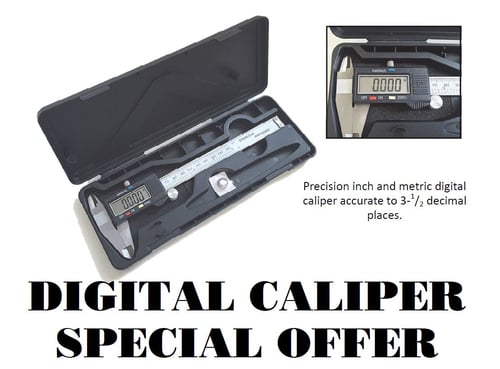
Calipers – Essential Measurement Tools
Calipers are devices used to accurately measure distances between two sides of an object. They’ve come a long way from their early resemblance to a compass with inward or outward-facing points. These early “compasses” had their tips adjusted to fit across the length of the object, and then reading the measurement.
Calipers are essential tools for a wide variety of projects and applications, especially in construction and design. Not all calipers, however, are made the same. Varieties of calipers include inside and outside calipers, divider calipers, oddleg calipers, Vernier, and dial calipers. Each of these provide different kinds of readings to various degrees of accuracy.
The Advantage of Digital Calipers
Digital calipers can be the best option for a variety of applications. These are shaped similarly to Vernier calipers, but with the addition of an electronic digital display. This display provides an accurate reading immediately.
Digital calipers can provide worry-free operation at the beginning of a project, especially at the design stage. Using these calipers allow you to avoid calculation mistakes further down the line and ensure that your final product has the high quality and reliability that your customers expect.
This is why Action Bearing is happy to provide a FREE digital caliper with orders of $250 or more. We understand the mission critical role bearings can play in your processes. In order to help you get even more out of your bearings, we are glad to offer these free digital calipers. Consider it a “thank you” for buying your ball bearings from us.
The offer is only available for a limited time, expiring on December 31, 2015. Contact us today to find out how to get your free digital caliper.
When you talk about wastewater treatment plants, in many cases, you are talking about facilities that are built, operated and maintained with taxpayer dollars.
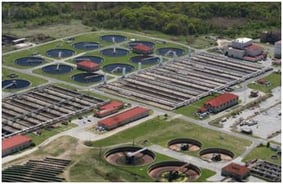
So keeping these plants running smoothly and efficiently depends greatly on using the right parts and timely replacement of those parts.
That’s why Action Bearing formed a special wastewater treatmentfacilities division. To keep pumps, drives and valves in a water treatment plant working efficiently 24/7 requires bearings and chains of the highest standard. Emerson Bearing’s offerings include chrome, stainless steel and engineered thermoplastic components.
Worldwide sourcing provides products at several price points. In addition to standard products, related and specialty products to improve efficiency for bearing replacement at wastewater treatment plants are available. For example, Action Bearing sells the Craft Split Roller pillow block, which allows for rapid replacement, reducing downtime and costs.
As part of the new division, wastewater treatment customers have access to industry specialists for recommendations on the right bearing.
Action Bearing Marketing Specialist Mike Quinn is responsible for the Wastewater Treatment division. He can be reached by e-mail at mquinn@emersonbearing.com or by calling 1.800.225.4587.
In the film The Graduate, a family friend advised Benjamin Braddock to get into plastics, that there was a great future there. We couldn’t agree more.

That’s why Action Bearing recently launched a new division to supply bearings and related products to the plastics industry. The plastic industry is dominated by extruders and injection molding machines. Both depend greatly on the reliability and durability of its bearings.
In an extruder, the processed plastic is pressed thru a nozzle into a profiled die. The extruder gearbox is subject to high torques as well as high radial and axial loads. This places major importance on the monitoring of bearings and replacement in a timely fashion. Injection molding machines are used for the production of parts in large quantities.
The screw feed and the linear bearings must be insensitive to heat and vibration and have high basic static and dynamic load ratings. Again, regular monitoring, maintenance and replacement of bearings are critical to keeping production schedules. Action Bearing has had great results with some existing clients in the plastics industry.
With this new division, with dedicated marketing and customer service staff for this industry, we will be better equipped to serve current clients and attract new plastics industry clients.
To date, Action Bearing has worked several plastic manufacturers. That includes a company in North Carolina that produces plastic wine corks, a manufacturer that produce plastic bags (including bio degradable plastic bags), and a manufacturer that produces plastic strapping.
The interesting thing about plastics is the industry is a strong indicator of how the economy is doing. During the 2008 recession, the plastic strapping company was only operating seven of its 12 production lines, two shifts per day.
Right now, they are back to three shifts, 24/7. Maybe The Graduate was right.
Action Bearing Marketing Specialist Bill Zylicz is responsible for the Plastics Industry division. He can be reached bzylicz@emersonbearing.com or 1.866.995.8762.


 Please visit Emersonbearing.com for our latest blogs and updates!
Please visit Emersonbearing.com for our latest blogs and updates!








